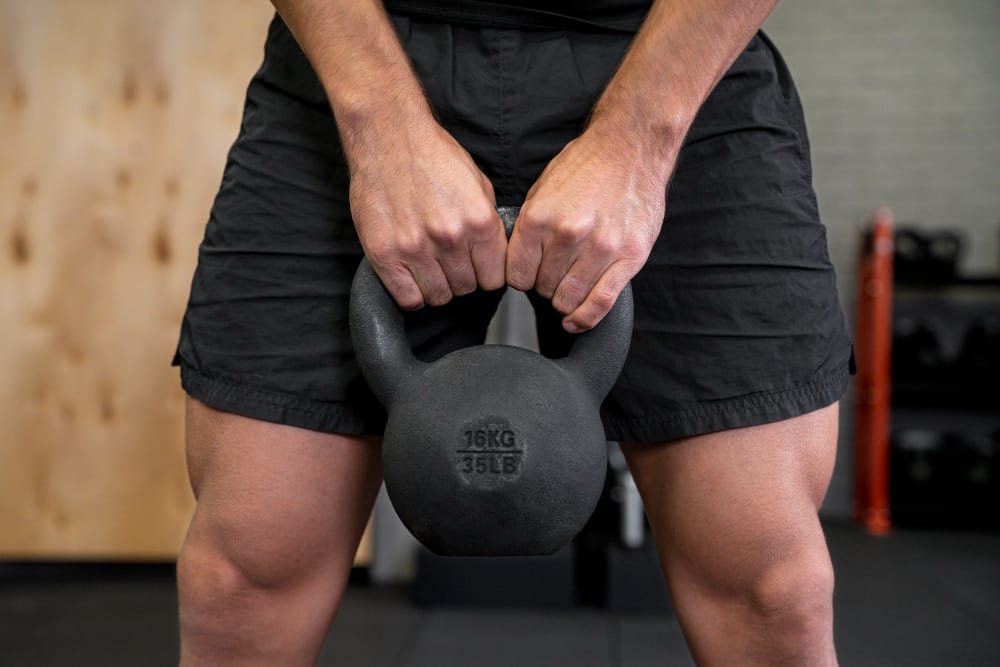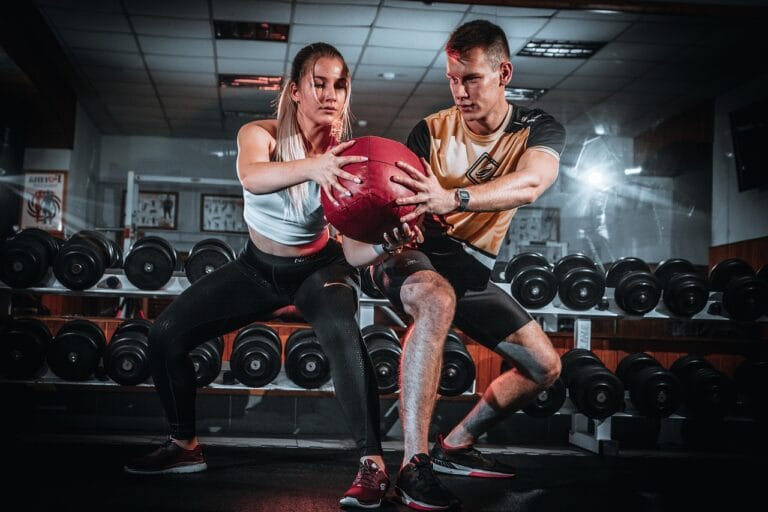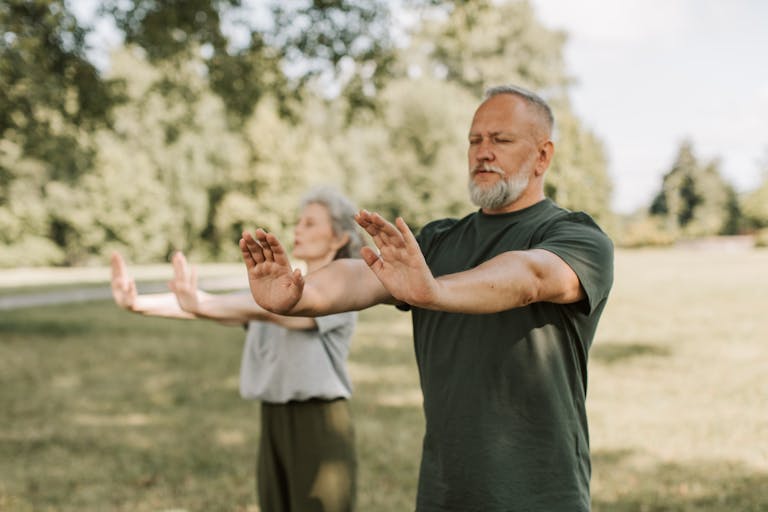FREE SHIPPING OVER $50
I’m a Weightlifting Coach—Here’s the One Lower-Body Move I Recommend Instead of Lunges

As a weightlifting coach, I spend my days analyzing movement. I help people get stronger, move better, and stay injury-free. When it comes to lower-body exercises, lunges are everywhere. They are the go-to for single-leg strength, balance, and hitting the glutes and quads. However, despite their popularity, lunges frequently cause problems for many people, often leading to knee discomfort, hip instability, or simply poor execution.
Because of these common form challenges and joint issues, I rarely program the traditional lunge for my general strength clients. Instead, I rely on a versatile, powerful, and often overlooked lower-body move that offers superior benefits for core stability, grip strength, and fixing the crucial muscle imbalances that lunges often fail to address.
The Lunge Problem: Why We Need a Better Alternative
Before we dive into the superior alternative, let’s quickly address why the conventional lunge, while visually impressive, isn’t always the best choice for achieving foundational strength and long-term fitness.
Lunges are a dynamic, unilateral exercise, meaning they work one leg at a time while requiring movement. This inherent dynamism is where the difficulty lies:
- Knee Stress: For many people, forward lunges place excessive shear force on the knee joint. The mechanics of stepping forward and stopping, combined with the forward travel of the knee, can aggravate existing issues or even create new ones.
- Balance and Stability Overload: Lunges require intense stabilization. While this is a benefit, focusing too much on keeping your balance often means you sacrifice the quality of the strength work. The weight you use must remain light, limiting the actual strength gain in your glutes and quads.
- Hip Flexor Dominance: Due to modern lifestyles (too much sitting), many individuals have tight hip flexors. Lunging often reinforces this tightness, making it harder to properly engage the glutes and leading to an anterior pelvic tilt.
We need an exercise that provides the single-leg benefits of a lunge—unilateral strength and stability—but in a way that respects the joints and maximally recruits the powerhouse muscles of the posterior chain and core. Enter the suitcase deadlift.
The Suitcase Deadlift: Your Secret Weapon for Core and Glutes
The suitcase deadlift is a highly functional, unilateral variation of the classic deadlift. The movement mimics picking up a heavy suitcase (hence the name) with one hand from the side of your body.
What Makes It Superior to Lunges?
The true magic of the suitcase deadlift lies not just in your legs, but in its unparalleled ability to demand stability from your entire torso.
1. Unmatched Anti-Lateral Flexion Core Work
When you hold a heavy dumbbell or kettlebell on just one side of your body, your core immediately kicks into overdrive. Your obliques, transversus abdominis, and quadratus lumborum must fire hard, working isometrically (without changing length) to prevent the weight from pulling your torso sideways. This is known as anti-lateral flexion.
This kind of core stability is incredibly functional. Think about walking, carrying groceries, or bracing for a heavy squat—these activities all demand that you resist unwanted torso movement. The suitcase deadlift trains this crucial stability under significant load, something a lunge cannot match. In fact, many weightlifting coaches argue it’s one of the best oblique-building exercises available.
2. Direct Glute and Hip Hinge Training
Unlike the lunge, which involves significant knee bend and forward movement, the suitcase deadlift is a pure hip-hinge pattern. This puts the emphasis squarely on the glutes and hamstrings—the posterior chain.
When you execute the hip hinge correctly:
- You push your hips back, loading the hammies and glutes eccentrically.
- You drive your hips forward, contracting the glutes powerfully at the top.
This direct, loadable focus means you can use heavier weights safely, leading to far greater potential for muscle gain and strength development in your posterior chain than a balance-limited lunge.
3. It’s Safer for the Knees
Because the movement is primarily a hip hinge with minimal knee travel, it drastically reduces the stress on the knee joint. For anyone with a history of knee pain, arthritis, or patellar tracking issues, the suitcase deadlift allows you to continue building serious lower-body strength and glutes without the high-impact risk of a lunge.
How to Execute the Perfect Suitcase Deadlift
Proper form is absolutely non-negotiable for the suitcase deadlift. Since you are lifting an unbalanced load, the risk of spinal rotation or rounding is higher if you rush.
Setup and Stance
- Weight Placement: Stand tall with your feet about hip-width apart, exactly as you would for a conventional deadlift. Place one dumbbell or kettlebell directly alongside the middle of one foot. Ensure the weight is outside your foot, not in front of it.
- Grip: Hinge at the hips, keeping your back flat, and grab the handle of the weight with the corresponding hand (e.g., weight on the right, grab with the right hand).
- Core Brace: Before lifting, take a big breath into your belly and brace your core as if preparing to be punched. This tension is your spinal protection.
The Lift
- Initiate: Keeping your chest up and your shoulders level (this is critical—don’t let the weight drag your shoulder down), drive your feet hard through the floor. The movement should come from your hips and legs, not your lower back.
- Focus on Symmetry: As you stand, consciously fight the urge to lean towards the side without the weight. Your obliques and core on the opposite side will be working overtime to keep your torso perfectly upright and symmetrical.
- Lockout: Stand tall, squeezing your glutes hard at the top. Do not arch your lower back.
- Descent: Maintaining that rigid core and flat back, slowly hinge your hips back and lower the weight back to the floor. The weight should tap the ground before you stand up for the next repetition.
- Repeat and Switch: Complete all repetitions on one side before switching the weight to the other side and repeating the sequence.
Pro Coach Tips for Max Glute and Core Activation
- Opposite Arm: Use your non-lifting arm to create tension by clenching your fist and pressing it against your side. This cross-body tension helps activate your core even further.
- The Look Test: Perform this exercise in front of a mirror (or better yet, film yourself). If your shoulders are tilting or your torso is bending laterally, the weight is too heavy, or your brace is too weak. Drop the weight and focus purely on maintaining a straight torso.
- Keep it Close: Just like a conventional deadlift, keep the weight touching your leg throughout the movement. This keeps the load centered and protects your lower back.
Why Suitcase Deadlifts are Functional Fitness Gold
Fitness isn’t just about how much you can lift in the gym; it’s about how effectively you can live your life outside of it. This is where the suitcase deadlift truly shines as a superior, functional exercise.
- Real-World Strength: Every time you carry a heavy suitcase, a child, a bag of dog food, or a bucket of water in one hand, you are performing a version of the suitcase deadlift or carry. Training this pattern directly translates to making those daily tasks safer and easier.
- Grip Strength: The heavy unilateral load puts an intense demand on your grip and forearms. Grip strength is not just crucial for heavier lifting; research suggests it’s a powerful biomarker for overall longevity and health.
- Fixing Imbalances: Since you must work each side independently, the suitcase deadlift is a master at exposing and correcting left-to-right strength and stability imbalances. If one side feels significantly harder, you know exactly where to direct your focus in future training sessions. This unilateral focus ultimately makes your bilateral lifts (squats, conventional deadlifts) stronger and safer.
Final Thoughts
The lunge has earned its place in fitness history, but for maximizing lower-body strength, optimizing glute and hamstring development, and building bulletproof core stability without punishing your knees, the suitcase deadlift is the clear winner in my coaching philosophy.
By replacing the dynamic instability of the lunge with the rigid, unilateral control required for the suitcase deadlift, you effectively load your glutes, train your hip hinge, and crush your core’s ability to resist rotation—all foundational elements for superior strength and long-term fitness. Don’t be afraid to make the swap; your knees, glutes, and overall core stability will thank you. Start light, prioritize perfect form, and watch your strength soar.
Related Articles
- Sitting Too Much? This One Move Reverses the Damage and Slows Aging, Say Experts
- Why Some Athletes Peak After 40—Neuroscience Reveals the Brain Advantage
- If You’re Over 45 and Can’t Pass These 4 Strength Tests, Your Mobility May Be at Risk
- Over 40? Trainers Say These 6 Exercises Are Non-Negotiable for Strength and Longevity
- This Forgotten Bicep Trick From the Golden Era Builds Sleeve-Splitting Arms Fast



